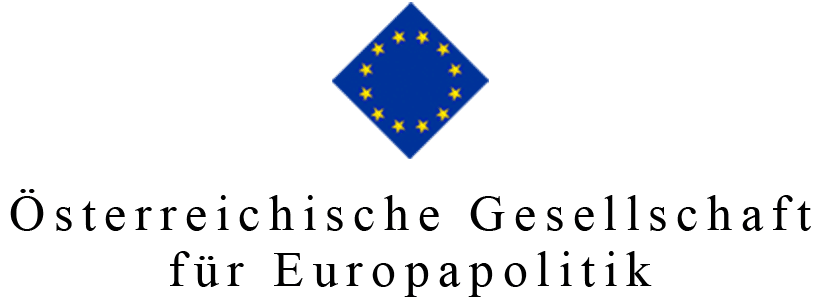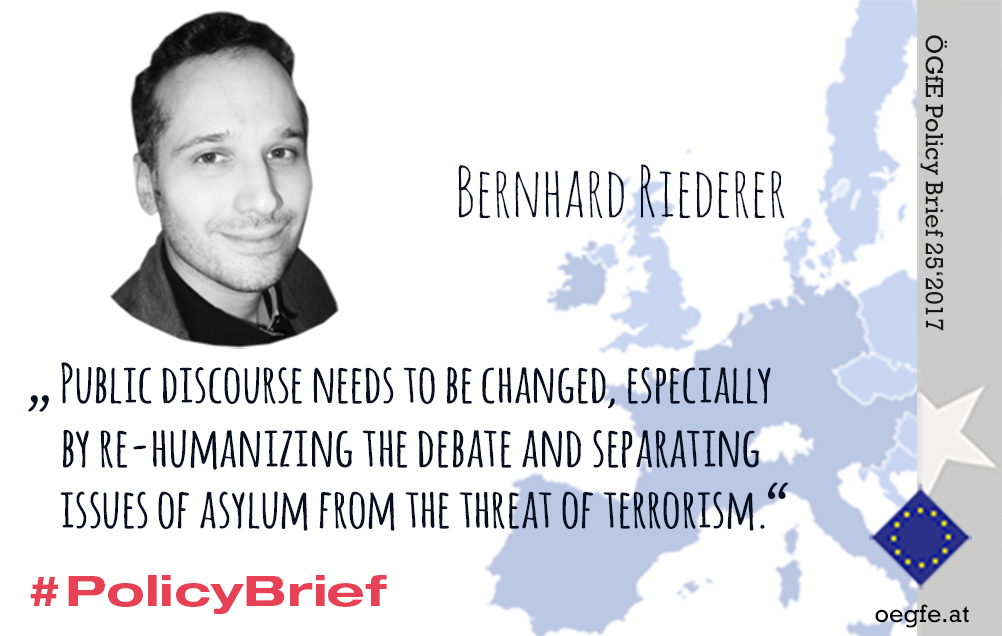Policy Recommendations
- In the aftermath of the so-called “refugee crisis” of 2015, social cohesion in Europe has apparently been weakened on several levels. Long-term consequences of societal polarisation for solidarity within European countries should not be ignored.
- Policies against social vulnerability of refugees need to be multidimensional to tackle economic, psychological, and social challenges. Societies should “invest” in refugees to foster future social cohesion and realise the potential of immigration.
- Public discourse needs to be changed, especially by re-humanizing the debate and separating issues of asylum from the threat of terrorism. Policies need to support public confidence and societal trust in immigrants to improve the societal climate.
Abstract
Immigrant inflows in 2015 triggered manifold reactions all over Europe. Policies soon turned towards border management, reforms of asylum procedures, and security issues while social scientific research focused on economic consequences for public finances and challenges for national labour markets. According to a recent expert survey, however, social vulnerability is a particularly serious long-term risk for European societies. In the media asylum seekers were frequently portrayed as a “problem” or “threat”. The general public experienced a polarisation between those welcoming and those afraid of asylum seekers. Therefore, this Policy Brief addresses issues of social cohesion in Europe. It argues that multidimensional policies are needed to tackle the looming societal challenges. Most importantly, the public discourse has to be altered and investment in refugees should be increased.
****************************
The challenge of social cohesion:
Addressing long-term consequences of the 2015 refugee crisis for Europe
Introduction: The challenge(s) of social cohesion
With hundreds of thousands displaced people entering the European Union during the second half of 2015, asylum seekers from Syria and Afghanistan dominated news headlines for weeks if not months. The term “refugee crisis” reflected the overload for public authorities in Europe not able to find a common strategy to manage the massive inflow of people looking for sanctuary. During the last two years, problems with border protection in the Schengen system have been discussed, studies addressed economic consequences for host countries, and governments have reformed immigration laws.[1] As a result, the granting of asylum has become temporary in many countries while the average duration of asylum procedures increased.[2] At the same time, debates about possible political and social consequences gained in explosiveness. Current election results all over Europe indicate that nationalist parties warning of threats due to “economic migration” and terroristic attacks are on the rise. Furthermore, integration issues have become prominent in public debates again. In Austria, for instance, the Integration Act 2017[3] recently established a new integration agreement including compulsory language and civic orientation courses (teaching democratic values). At the same time, a ban on the full-body veil in public spaces was introduced.
Over the course of the last years, social cohesion in Europe has apparently been weakened on several levels.
Over the course of the last years, social cohesion in Europe has apparently been weakened on several levels: First, problems to establish a quota system demonstrated missing solidarity between EU member states. Secondly, the differentiation in citizens welcoming displaced people and those afraid of cultural differences and financial burden have led to more polarised societies. Thirdly, a lack of social support for arriving people may add complexity to the problem of social integration. It has already been discussed in other ÖGfE Policy Briefs[4] that closing borders and relocation will neither strengthen solidarity within the EU nor end the “refugee crisis”. Therefore, the present one wants to address issues on the societal level.
Refugees and social vulnerability
In a recently published questionnaire survey, 176 experts (i.e. scientists, practitioners, and policy-makers) from all over Europe were asked about expected consequences of refugee flows for vulnerability of families in Europe.[5] The study defined vulnerability as risk of harm and distinguished between three dimensions of vulnerability: (a) economic vulnerability referring to financial aspects like poverty and economic hardship, (b) psychological vulnerability including strong feelings of stress, anxiety or depression, and (c) social vulnerability comprising aspects such as stigmatisation, discrimination, and a lack of social support. It seems clear that refugees are concerned by economic and psychological vulnerability. Their financial situation is often very poor as savings usually dried up during their long journey to the host country. In addition, the risk of unemployment and dependence on social benefits is particularly high among refugees.[6] Traumatic experiences both in the country of origin and on their way to Europe are mainly responsible for high risks of mental health problems.[7] In line with these facts, a majority of experts expected short-term increases in economic and psychological vulnerability in Europe due to refugees between 2015 and 2020. Most respondents, however, did not assume that economic or psychological vulnerability would further increase due to refugees in the long run (between 2020 and 2050).
According to experts, the main challenge for European societies is future social vulnerability.
According to experts, the main challenge for European societies is future social vulnerability. Six in ten survey participants assumed an increase of social vulnerability between 2015 and 2020. In addition, more than fifty per cent expected that social vulnerability due to refugees will even further increase until 2050. Looking at results by European regions, majorities not expecting increases in social vulnerability are mainly found in Eastern European countries with particularly strict immigration laws that were less affected by asylum applications in 2015/2016.[8] As social vulnerability refers to stigmatisation, discrimination, and a lack of social support, this result is a warning that respondents were mainly worried about social cohesion in European societies.
Why should social vulnerability due to refugees increase in the long run? Surely, strict behavioural rules during long periods of waiting for the asylum decision do not foster contact to locals. Missing allowance and opportunity to work do not strengthen integration in the host society either. Both can lead to segregation and isolation. But more important reasons can be found in the public debates emerging since 2015/2016. First, Europeans were torn. One group welcomed refugees while the other one was afraid of an “invasion” by foreign people.[9] Societal polarisation was huge in this respect. Secondly, asylum seekers were categorised into those deserving help and those with predominantly economic motives for migration.[10] Fears of “welfare shopping” and worries about the willingness of refugees to adapt to the culture of natives were widespread[11] as refugees have frequently been “framed as a problem” in the mass media.[12] Thirdly, and most importantly, many Europeans were (and are) indeed afraid of terrorism. Asylum seekers in general were then perceived to be a threat open for insinuation by terroristic organisations.[13] It can be assumed that labelling refugees not only as outsiders but even as potential murderers more than ever fosters feelings of alienation, thereby weakening social cohesion by affecting refugees as well as natives.
Policy recommendations to avoid increases in social vulnerability in the long run
Potential policy implications are manifold. They refer to economic, psychological, and social aspects. As vulnerability in one dimension often triggers vulnerability in another dimension, multidimensional approaches are necessary.
- Economic integration is one point. The refugees who arrived in 2015 are usually willing to work.[14] It is central to give them access to the labour market. Language training and on-the-job training would facilitate integration into the workforce. Migrants’ skills could be better used to increase (economic) gains of immigration. Most importantly, it is worth to invest in migrants’ children.[15] Schools receiving these children need to be prepared for this task. [16] Economic integration should also foster social integration in host societies. Where local authorities and market institutions fail to provide resources and opportunities, migrants will be forced to rely on networks of origin or ethnicity. Although these networks are advantageous to migrants because they provide organizational, emotional, and social support, they carry the danger of segregation and isolation.[17]
- Addressing psychological problems is another point. These problems do not necessarily end with a successful refuge or economic integration. Awareness has to be raised that traumatic experiences continue to have effects even after years. Stress experienced during the acculturation process frequently complicates existing psychological problems. Children are often affected twice: directly and indirectly through overburdened parents. To increase their opportunities and enhance the quality of treatment, resources for long-term psychological care and professional training are necessary. Due to the high degree of cruelty in reported experiences, specific individual histories, and different cultural backgrounds, even professionals often reach their limits in supporting refugees. Enhancing their cultural competences is thus crucial.[18]
- The main point of this Policy Brief, however, refers to social vulnerability. Policies need to strengthen the public confidence and societal trust in immigrants to improve the societal climate.[19] First and foremost, it seems to be necessary that the issues of terrorism and refuge are clearly separated from each other in the public discourse.[20] Refugees are displaced people who are usually searching for safety and support. They are not per se a threat. Secondly, the discussion of deservingness has to be stopped. Displaced people are not responsible for the tragedies that led to their flight. Usually, the reasons are results of historic political processes.[21] Thirdly, the debate has to be re-humanized. Solidarity is likely to be strengthened if we recognize that we are talking about people in need.[22] Finally, local policies targeted toward the inclusion of immigrants and allowing their participation in public affairs can mobilize their skills and capacities for the well-being of the whole community,[23] thereby showing the added societal value of migration.
Public and political debates evolving in the aftermath of the so-called “refugee crisis” of 2015 focused on border management, asylum procedures, security issues, and economic consequences. These are important issues. Nevertheless, the challenge of social cohesion within European societies should not be ignored. The public discourse has to be altered and investment in refugees should be increased.[24]
[1] See, for instance, Göbl, G., Kvorning Lassen, C., Lovec, M., Nic, M., & Schmidt, P. (2016). Central Europe and the refugee question: cooperation, not confrontation. ÖGfE Policy Brief, 22’2016. Melander, A., Pichelmann, K. (2015). An economic assessment of asylum seeker inflows: Spectacular and disturbing images, unspectacular macro-economic impact. ÖGfE Policy Brief, 37’2015. Eurofound (2016). Approaches to the labour market integration of refugees and asylum seekers. Luxembourg: Publications Office of the European Union.
[3] “Bundesgesetz zur Integration rechtmäßig in Österreich aufhältiger Personen ohne österreichische Staatsbürgerschaft”; available at: https://www.ris.bka.gv.at/
[4] See Göbl et al. (2016) and Wolf, W. (2016). Die Flüchtlingskrise und die territoriale Kohäsion: Eine verbesserte Armutsbekämpfung in Europas östlichen Regionen als Voraussetzung für einen EU-Konsens in der Flüchtlingsverteilung. ÖGfE Policy Brief, 2’2016.
[5] Participants reported their views for European countries and dimensions of vulnerability they are familiar with. For details, see Riederer, B., Mynarska, M., Winkler-Dworak, M., Fent, T., Rengs, B., & Philipov, D. (2017). Futures of families in times of multifaceted societal changes: a foresight approach (FamiliesAndSocieties Working Paper No. 66). Retrieved from: http://www.familiesandsocieties.eu/wp-content/uploads/2017/01/WP66-Riedereretal2017.pdf
[6] OECD (2016). Making integration work: Refugees and others in need of protection. Paris: OECD Publishing.
[7] Wenzel, T., & Kinigadner, S. (2016). Auf der Flucht. Psychologie in Österreich, 36(3), 135-143.
[8] Cf. Riederer et al. (2017).
[9] Holmes, S.M., & Castañeda, H. (2016). Representing the “European refugee crisis” in Germany and beyond: Deservingness and difference, life and death. American Ethnologist, 43(1), 12-24.
[10] Esses, V., Hamilton, L.K., & Gaucher, D. (2017). The global refugee crisis: Empirical evidence and policy implications for improving public attitudes and facilitating refugee resettlement. Social Issues and Policy Review, 11(1), 78-123.
[11] Dalla Zuanna, G., Hein, C., & Pastore, F. (2015). The pitfalls of a European migration policy: Migration and political challenges in times of crisis in the EU (Population & Policy Compact, Policy Brief No. 09). Retrieved from: http://www.population-europe.eu/policy-brief/pitfalls-european-migration-policy-0
[12] Berry, M., Garcia-Blanco, I., & Moore, K. (2015). Press coverage of the refugee and migrant crisis in the EU: A content analysis of five European countries, p. 5. Retrieved from: http://www.unhcr.org/56bb369c9.html
[13] See Esses et al. (2017) and Holmes & Castañeda (2016).
[14] See Buber-Ennser, I., Kohlenberger, J., Rengs, B., Al Zalak, Z., Goujon, A., Striessnig, E., et al. (2016). Human capital, values, and attitudes of persons seeking refuge in Austria in 2015. PLoS ONE, 11(9), e0163481. doi:10.1371/journal.pone.0163481.
[15] Dalla Zuanna et al. (2015).
[17] IOM (2015). World Migration Report 2015. Migrants and cities: New partnerships to manage mobility. Geneva: International Organization for Migration. Retrieved from: http://publications.iom.int/system/files/wmr2015_en.pdf
[18] See Wenzel & Kinigadner (2016).
[19] See Dalla Zuanna et al. (2015).
[20] Carrera, S., Blockmans, S., Gros, D., & Guild, E. (2015). The EU’s response to the refugee crisis: Taking stock and setting policy priorities (CEPS essay No. 20). Brussels: Centre for European Policy Studies, p. 15.
[21] Holmes & Castañeda (2016).
[22] Esses et al. (2017, p. 87).
[24] The research leading to this Policy Brief has received funding from the European Union’s Seventh Framework Programme (FP7/2007–2013) under grant agreement no. 320116 for the research project FamiliesAndSocieties.
ISSN 2305-2635
The views expressed in this publication are those of the author and not necessarily those of the Austrian Society of European Politics or the organisation for which the author works.
Key words
migration; asylum; refuge; social cohesion; social vulnerability
Citation
Riederer, B. (2017). The challenge of social cohesion: Addressing long-term consequences of the 2015 refugee crisis for Europe. Wien. ÖGfE Policy Brief, 25’2017







